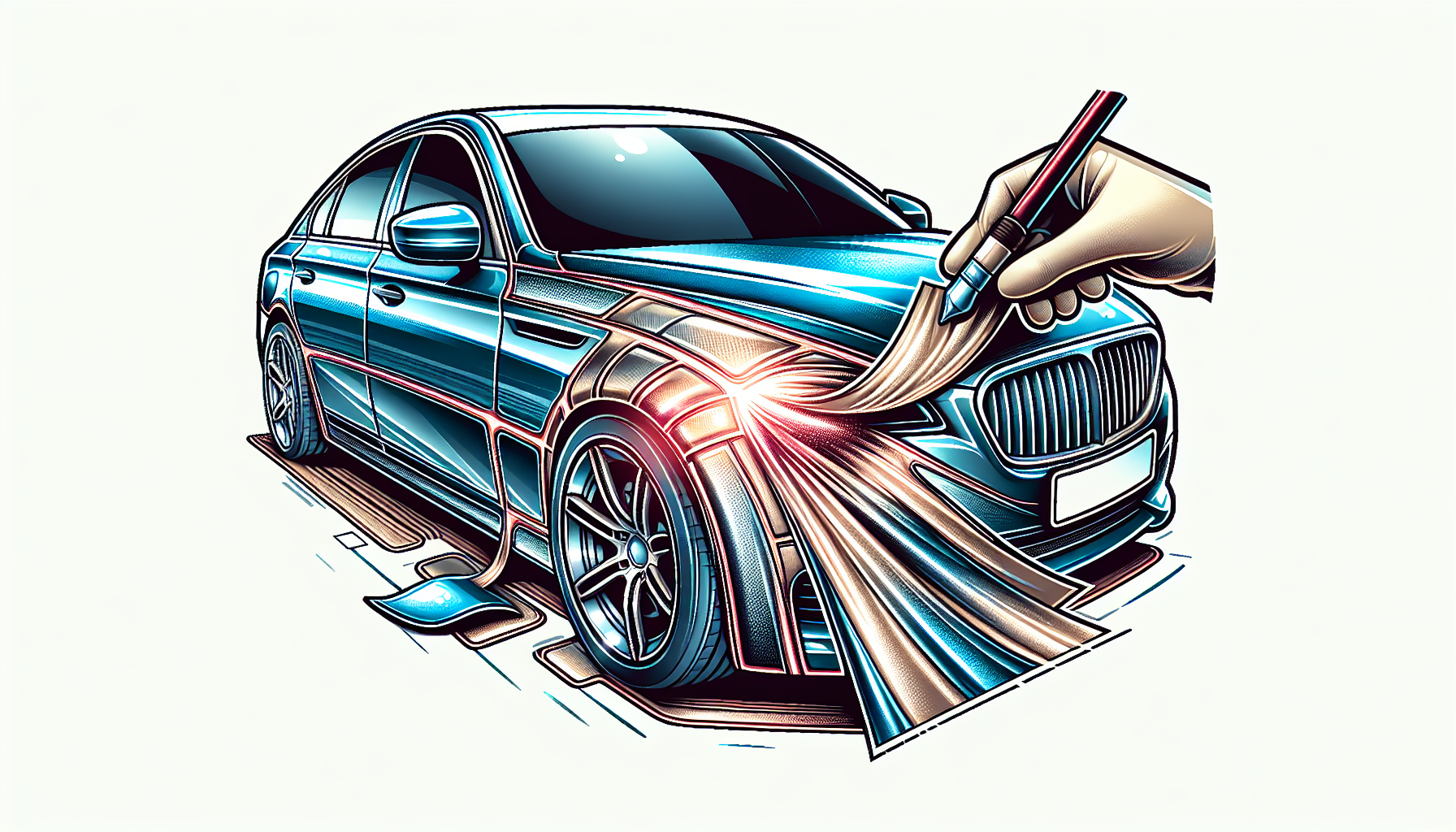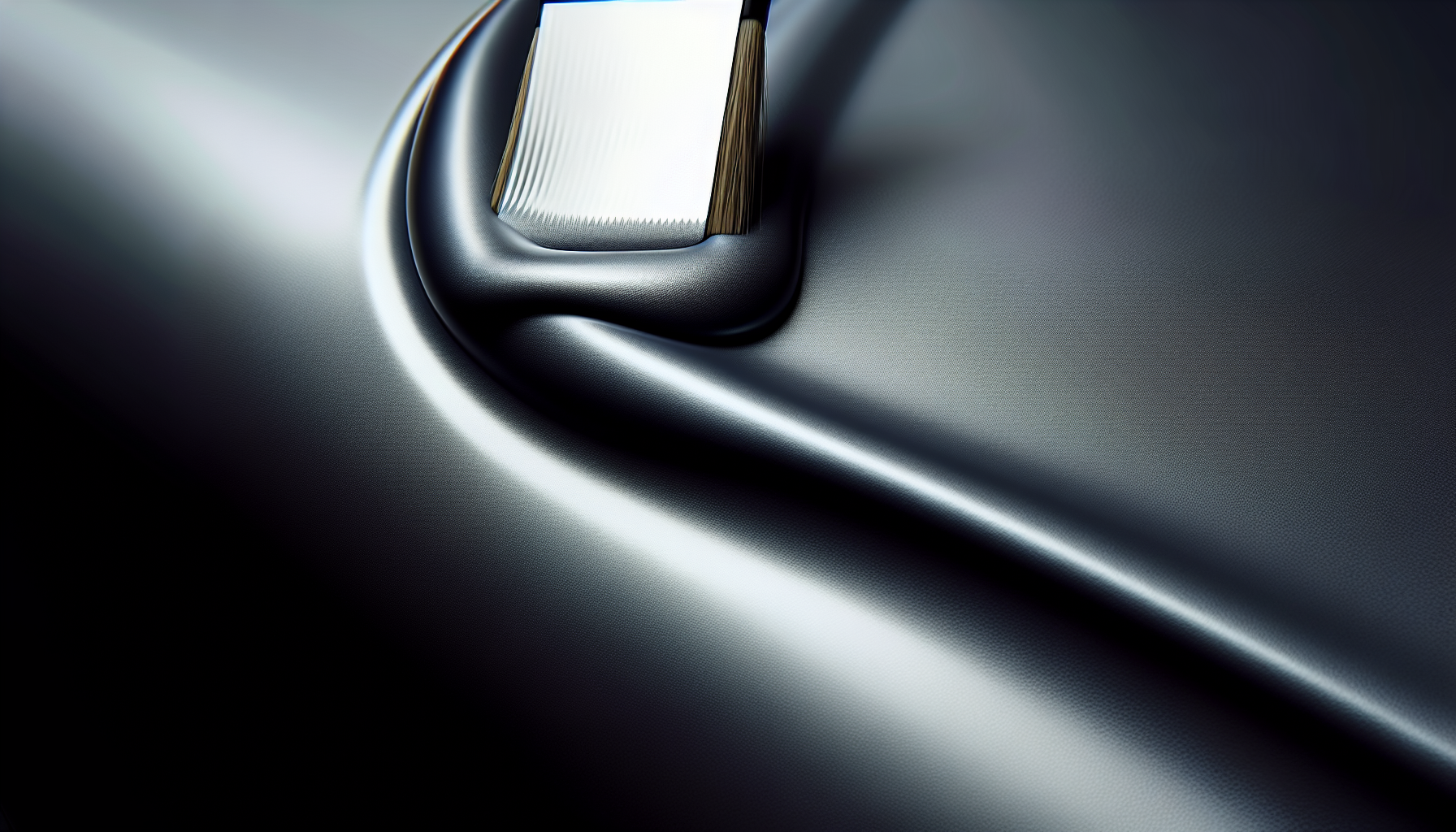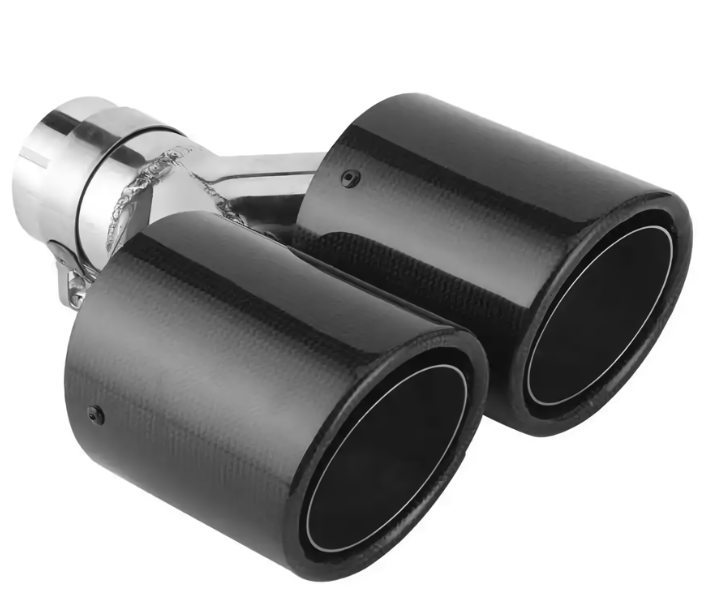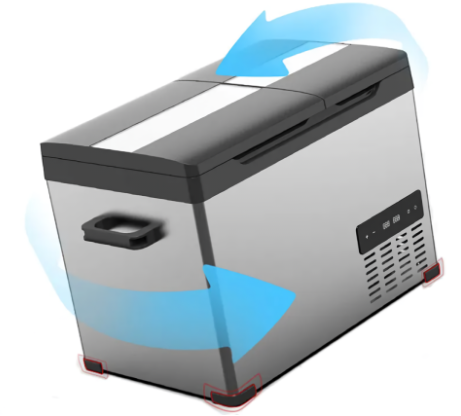Unlocking the Secrets of a Successful Bondo and Vinyl Car Wrap Combination

Are you a car enthusiast looking to give your vehicle a personalized makeover with a vinyl car wrap? If you’ve made Bondo repairs to your car’s body, you might be wondering if a vinyl car wrap will stick well to the repaired area. The answer is yes, but it requires some special considerations. In this article, we’ll delve into the world of Bondo repairs and vinyl car wraps, exploring the science behind successful vinyl adhesion to Bondo and providing expert tips and tricks for a smooth, bubble-free installation.
A successful vinyl car wrap application relies on a solid foundation, and that’s where Bondo repairs come in. By understanding the basics of Bondo and vinyl car wraps, you’ll be better equipped to tackle the installation process. We’ll cover the benefits of vinyl car wraps, from their ease of installation to their ability to completely transform the look of your vehicle. We’ll also explore the importance of surface preparation, adhesion promoters, and choosing the right vinyl wrap for your Bondo repairs.
By following the best practices outlined in this article, you’ll be able to achieve a professional-looking vinyl car wrap installation that will make your vehicle stand out from the crowd. Whether you’re a DIY enthusiast or a seasoned professional, this article is your ultimate guide to ensuring a successful vinyl car wrap application to Bondo repairs.
1. The Basics of Bondo Repairs and Vinyl Car Wraps
When it comes to car customization, vinyl car wraps and Bondo repairs are two popular methods that can help you achieve the look you want. But before we dive into the nitty-gritty of applying a vinyl car wrap to Bondo repairs, it’s essential to understand the basics of these two processes. A successful vinyl car wrap application relies on a solid foundation, and that’s where Bondo repairs come in.
Bondo is a popular body filler used to repair dents, scratches, and other imperfections in a car’s body. It’s a versatile and easy-to-use product that can be sanded and shaped to create a smooth, seamless finish. When applied correctly, Bondo can create a strong, durable bond that’s perfect for applying a vinyl car wrap. And that’s where vinyl car wraps come in – a cost-effective and easy-to-install way to give your car a personalized makeover. Vinyl car wraps are a popular choice among car enthusiasts, offering a wide range of designs, colors, and finishes to suit any style.
By combining Bondo repairs with vinyl car wraps, you can achieve a professional-looking finish that’s both durable and eye-catching. But to get the best results, it’s crucial to understand the unique characteristics of each process. In this article, we’ll explore the benefits of Bondo repairs and vinyl car wraps, and provide expert tips and tricks for ensuring a successful vinyl car wrap application to Bondo repairs.
What is Bondo?
Bondo is a household name in the world of automotive body repair. This popular body filler has been trusted by car enthusiasts and professionals alike for decades, and for good reason. Developed by 3M, Bondo is a high-strength, two-part polyester resin that’s designed to repair dents, scratches, and other imperfections in a car’s body. When mixed and applied correctly, Bondo creates a strong, durable bond that’s perfect for sanding and shaping to create a smooth, seamless finish.
One of the key benefits of Bondo is its ease of use. Whether you’re a seasoned pro or a DIY enthusiast, Bondo is easy to mix and apply, and can be sanded and shaped to achieve a professional-looking finish. And with its fast-drying formula, you can get back to work on your project in no time. But what really sets Bondo apart is its versatility. It can be used on a wide range of surfaces, including metal, fiberglass, and even wood, making it the perfect solution for a wide range of repair jobs.
With its proven track record of reliability and performance, it’s no wonder Bondo is the go-to body filler for many car enthusiasts and professionals. Whether you’re looking to repair a small scratch or tackle a major restoration project, Bondo is the perfect tool for the job. And with its compatibility with vinyl car wraps, it’s an essential step in achieving a professional-looking finish that’s both durable and eye-catching.
The Benefits of Vinyl Car Wraps
Vinyl car wraps have become a staple in the world of car customization, and for good reason. These versatile and easy-to-install wraps offer a wide range of benefits that make them a popular choice among car enthusiasts. One of the biggest advantages of vinyl car wraps is their ability to completely transform the look of your vehicle. With a vast range of designs, colors, and finishes to choose from, you can give your car a unique and personalized look that’s sure to turn heads.
But vinyl car wraps offer more than just aesthetic appeal. They’re also a cost-effective way to protect your car’s original paint job from scratches and fading. And with their easy-to-remove design, you can switch up your car’s look as often as you like without damaging the underlying paint. Plus, vinyl car wraps are a great way to advertise your business or promote your brand, making them a popular choice among companies and entrepreneurs.
Whether you’re looking to give your car a fresh new look, protect your investment, or promote your brand, vinyl car wraps are the perfect solution. With their ease of installation, durability, and versatility, it’s no wonder they’re a favorite among car enthusiasts and business owners alike. And with their compatibility with Bondo repairs, you can achieve a professional-looking finish that’s both durable and eye-catching.
2. The Science Behind Vinyl Adhesion to Bondo

When it comes to achieving a successful vinyl car wrap installation on Bondo repairs, understanding the science behind vinyl adhesion is crucial. At its core, vinyl adhesion to Bondo relies on the ability of the vinyl wrap to form a strong bond with the Bondo surface. This bond is created through a combination of chemical and mechanical forces, which work together to ensure a durable and long-lasting attachment. The key to successful vinyl adhesion lies in the surface preparation of the Bondo repair, as well as the selection of the right vinyl wrap and adhesive promoter.
The surface of the Bondo repair plays a critical role in the vinyl adhesion process. A clean, dry, and smooth surface is essential for creating a strong bond between the vinyl wrap and the Bondo. Any imperfections or contaminants on the surface can weaken the bond, leading to peeling or lifting of the vinyl wrap. By properly preparing the surface, you can ensure a strong and durable bond that will withstand the elements and last for years to come.
By understanding the science behind vinyl adhesion to Bondo, you can take the necessary steps to ensure a successful vinyl car wrap installation. By selecting the right vinyl wrap and adhesive promoter, and properly preparing the surface of the Bondo repair, you can create a strong and durable bond that will give your car a professional-looking finish. With the right knowledge and techniques, you can achieve a vinyl car wrap installation that’s both beautiful and long-lasting.
The Role of Surface Preparation
When it comes to achieving a successful vinyl car wrap installation on Bondo repairs, surface preparation is key. A clean and degreased surface is essential for creating a strong bond between the vinyl wrap and the Bondo. Any dirt, grime, or oils on the surface can weaken the bond, leading to peeling or lifting of the vinyl wrap. By properly cleaning and degreasing the surface, you can ensure a strong and durable bond that will withstand the elements and last for years to come.
The importance of surface preparation cannot be overstated. Even the slightest amount of dirt or oils can compromise the bond between the vinyl wrap and the Bondo. That’s why it’s crucial to use a high-quality cleaner and degreaser specifically designed for automotive surfaces. By following the manufacturer’s instructions and taking the necessary precautions, you can ensure a clean and degreased surface that’s ready for the vinyl wrap.
By taking the time to properly prepare the surface, you can ensure a successful vinyl car wrap installation that will give your car a professional-looking finish. With the right techniques and materials, you can achieve a strong and durable bond that will last for years to come. Don’t skimp on the surface preparation – it’s the key to a successful vinyl car wrap installation.
The Importance of Adhesion Promoters
Adhesion promoters are a crucial step in the vinyl car wrap installation process, particularly when it comes to Bondo repairs. These special primers are designed to enhance the bond between the vinyl wrap and the Bondo surface, ensuring a strong and durable attachment. By applying an adhesion promoter to the Bondo surface, you can create a surface that’s receptive to the vinyl wrap, allowing for a strong and lasting bond.
Adhesion promoters work by creating a chemical bond between the vinyl wrap and the Bondo surface. This bond is stronger than a physical bond, allowing the vinyl wrap to withstand the elements and last for years to come. Without an adhesion promoter, the vinyl wrap may not adhere properly to the Bondo surface, leading to peeling or lifting. By using an adhesion promoter, you can ensure a strong and durable bond that will give your car a professional-looking finish.
The importance of adhesion promoters cannot be overstated. They are a critical step in the vinyl car wrap installation process, and can make all the difference in the success of the installation. By selecting the right adhesion promoter for your Bondo repair, you can ensure a strong and durable bond that will last for years to come. Don’t skip this crucial step – use an adhesion promoter to ensure a successful vinyl car wrap installation.
3. Best Practices for Applying Vinyl Car Wraps to Bondo Repairs
When it comes to applying a vinyl car wrap to a Bondo repair, there are a few key best practices to keep in mind to ensure a smooth, bubble-free installation. First, make sure the Bondo surface is clean and dry, free of any dirt, oils, or other contaminants that could compromise the bond between the vinyl wrap and the Bondo. Next, apply a high-quality adhesion promoter to the Bondo surface, following the manufacturer’s instructions for application and drying times.
When applying the vinyl wrap, use a squeegee or other tool to remove any air bubbles or wrinkles, working from the center of the wrap outwards. Use a heat gun or other heat source to apply gentle heat to the vinyl wrap, helping it to conform to the contours of the Bondo surface. Finally, use a trimming tool or other utility knife to carefully trim the edges of the vinyl wrap, ensuring a smooth, seamless finish.
By following these expert tips and tricks, you can ensure a successful vinyl car wrap installation on your Bondo repair. Remember to take your time, work carefully, and don’t be afraid to ask for help if you need it. With the right techniques and materials, you can achieve a professional-looking finish that will give your car a unique and eye-catching look.
Choosing the Right Vinyl Wrap
When it comes to choosing a vinyl wrap for your Bondo repair, it’s essential to select a wrap that’s compatible with the repair material. Not all vinyl wraps are created equal, and some may not adhere properly to Bondo or may be prone to peeling or lifting. Look for vinyl wraps that are specifically designed for use on Bondo repairs, and that are made with high-quality materials that can withstand the elements.
One of the key factors to consider when choosing a vinyl wrap is the adhesive used. Look for wraps with a strong, industrial-strength adhesive that’s designed to bond with Bondo. You should also consider the thickness and durability of the vinyl wrap, as well as its resistance to scratches and fading. By choosing a high-quality vinyl wrap, you can ensure a professional-looking finish that will last for years to come.
In addition to the quality of the vinyl wrap, you should also consider the color and design options available. With a wide range of colors and designs to choose from, you can select a wrap that complements your car’s original paint job or that gives your car a unique, eye-catching look. By selecting the right vinyl wrap for your Bondo repair, you can ensure a successful installation that will give your car a fresh, new look.
Applying Heat and Pressure for a Lasting Bond
When it comes to applying a vinyl car wrap to a Bondo repair, heat and pressure are crucial elements of the process. By applying heat and pressure, you can ensure a strong and lasting bond between the vinyl wrap and the Bondo surface. Heat helps to soften the adhesive, allowing it to flow into the tiny crevices and pores of the Bondo, creating a strong and durable bond. Pressure, on the other hand, helps to ensure that the vinyl wrap is smoothly and evenly applied, with no air bubbles or wrinkles.
The application of heat and pressure must be done carefully, however, to avoid damaging the vinyl wrap or the Bondo surface. A heat gun or other heat source should be used to apply gentle heat to the vinyl wrap, and a squeegee or other tool should be used to apply even pressure. By working carefully and methodically, you can ensure a smooth and bubble-free finish that will last for years to come.
By following these tips and best practices, you can ensure a successful vinyl car wrap installation on your Bondo repair. Remember to take your time, work carefully, and don’t be afraid to ask for help if you need it. With the right techniques and materials, you can achieve a professional-looking finish that will give your car a unique and eye-catching look.
4. Common Pitfalls and Troubleshooting Tips
While vinyl car wrap applications can be a great way to give your car a fresh new look, there are some common pitfalls to watch out for. One of the most common obstacles is air bubbles and wrinkles, which can be caused by poor surface preparation, inadequate heat and pressure, or incorrect vinyl wrap application. Another common issue is adhesive failure, which can occur if the vinyl wrap is not compatible with the Bondo surface or if the surface is not properly cleaned and prepared.
Fortunately, these common pitfalls can be easily overcome with some troubleshooting tips and best practices. For example, to avoid air bubbles and wrinkles, make sure to clean and prepare the surface carefully, apply gentle heat and pressure, and use a high-quality vinyl wrap. To avoid adhesive failure, make sure to choose a vinyl wrap that is compatible with the Bondo surface, and follow the manufacturer’s instructions for application and installation.
By following these tips and best practices, you can ensure a successful vinyl car wrap application that will give your car a professional-looking finish. Remember to take your time, work carefully, and don’t be afraid to ask for help if you need it. With the right techniques and materials, you can achieve a smooth and bubble-free finish that will last for years to come.
Avoiding Air Bubbles and Wrinkles
Air bubbles and wrinkles are one of the most common issues that can arise when applying a vinyl car wrap to a Bondo repair. However, with some pro techniques and best practices, you can avoid these common pitfalls and achieve a smooth, bubble-free finish. One of the key techniques is to apply gentle heat and pressure to the vinyl wrap, using a heat gun or other heat source to soften the adhesive and a squeegee or other tool to apply even pressure.
Another important technique is to use a high-quality vinyl wrap that is specifically designed for use on Bondo repairs. These wraps are typically made with a stronger adhesive and a more durable material that can withstand the elements and last for years to come. Additionally, make sure to clean and prepare the Bondo surface carefully, removing any dirt, oils, or other contaminants that could compromise the bond between the vinyl wrap and the surface.
By following these pro techniques and best practices, you can ensure a smooth, bubble-free finish that will give your car a professional-looking finish. Remember to take your time, work carefully, and don’t be afraid to ask for help if you need it. With the right techniques and materials, you can achieve a flawless finish that will make your car stand out from the crowd.
Dealing with Adhesive Failure
Adhesive failure is a common issue that can occur when applying a vinyl car wrap to a Bondo repair. This can be caused by a variety of factors, including poor surface preparation, inadequate heat and pressure, or incorrect vinyl wrap application. However, with the right techniques and materials, you can identify and address issues with vinyl adhesion and ensure a strong and lasting bond.
To identify adhesive failure, look for signs such as peeling, lifting, or bubbling of the vinyl wrap. If you notice any of these issues, it’s essential to address them promptly to prevent further damage. Start by cleaning and preparing the surface again, removing any dirt, oils, or other contaminants that may be compromising the bond. Then, reapply the vinyl wrap using gentle heat and pressure, making sure to follow the manufacturer’s instructions for application and installation.
By following these tips and best practices, you can ensure a strong and lasting bond between the vinyl wrap and the Bondo surface. Remember to take your time, work carefully, and don’t be afraid to ask for help if you need it. With the right techniques and materials, you can achieve a professional-looking finish that will give your car a unique and eye-catching look.
What is the best way to prepare a Bondo surface for a vinyl car wrap?
To prepare a Bondo surface for a vinyl car wrap, make sure to clean and degrease the area thoroughly, then lightly sand the surface to create a smooth finish. This will ensure a strong and lasting bond between the vinyl wrap and the Bondo surface.
Can I use a vinyl car wrap on a freshly painted Bondo repair?
It’s recommended to wait at least 24 hours after painting a Bondo repair before applying a vinyl car wrap. This will allow the paint to fully cure and ensure a strong bond between the vinyl wrap and the paint.
What is the best type of vinyl car wrap to use on a Bondo repair?
Look for a high-quality vinyl car wrap that is specifically designed for use on Bondo repairs. These wraps typically have a stronger adhesive and are more durable than standard vinyl wraps.
How do I avoid air bubbles and wrinkles when applying a vinyl car wrap to a Bondo repair?
To avoid air bubbles and wrinkles, apply gentle heat and pressure to the vinyl wrap, using a heat gun or other heat source to soften the adhesive and a squeegee or other tool to apply even pressure. Make sure to clean and prepare the surface carefully, and use a high-quality vinyl wrap.
Can I remove a vinyl car wrap from a Bondo repair without damaging the surface?
Yes, you can remove a vinyl car wrap from a Bondo repair without damaging the surface. Use a heat gun or other heat source to soften the adhesive, then carefully peel the vinyl wrap away from the surface. If any residue is left behind, use a gentle cleaning solution to remove it.


